Pius XII knew about the Shoah
The conference closed yesterday at the Gregorian University brought together historians and theologians, Jews and Christians, to take stock of studies centered on the figure of Pius XII. Among the speakers was historian Michele Sarfatti
Michele, a three-day conference that focused on new documents related to the pontificate of Pius XII during World War II closed yesterday at the Gregorian University. Why was this meeting so important?
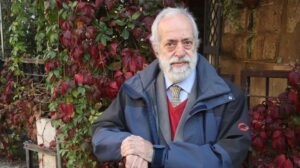
Let me first say that the conference could not benefit from the contribution of the scholars who were expected from Israel, because of the consequences of the horrific attack carried out by Hamas against the Israeli civilian population; I would like to mention in particular the studies of Iael Nidam-Orvieto, director of the International Institute for Holocaust Research at Yad Vashem. The conference, in fact, was hosted by the Gregorian University, but organized by six institutions, one of which is the Center for Contemporary Jewish Documentation (CDEC), which commissioned me to follow it. It is certainly the most important conference of all the meetings ever held on the subject. Three years after the opening of the Vatican archives, it will certainly not put an end to the many open issues of Pius XII’s pontificate, but all of us historians could discuss the various strands of research that have been initiated. Moreover, there is to be considered that the panel of speakers, which includes not only historians but also archivists, theologians and rabbis, is an additional element that increases the interest in the meeting. Indeed, I believe that when different approaches on the same topic are mixed, it can only increase mutual knowledge.
You spoke in the session devoted to what the Church knew about the Shoah during the war.
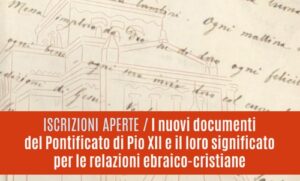
Yes. I was able to study, albeit still not completely, some of the folders kept in the Vatican archives. I would like to highlight how both I and other scholars have been able to enjoy total free access to the papers, so I have become convinced that by now there are no more documents removed from historical research.As far as I am concerned, as you said I focused on 1942.
Why?
Because, in the tragedy of the Shoah, 1942 is the most disastrous year. Keep in mind that just over half of the millions of Jews murdered were murdered in that very year.
What emerges from the papers you were able to examine?

The first dismaying fact is this: as the year goes on, which means, as we know today, as the concentration camps are put into operation, the news arriving at the Vatican increasingly places two terms side by side: “Jew” and “death.” This means that if we read the documents in succession, the feeling, which could not be escaped in the Vatican, that something terrible was happening in the Nazi-occupied territories becomes apparent. Of course, these are often fragmented, imprecise and imperfect reports, because they are all drawn from clandestine sources, but the fact is certain: these sources tell us of killings that they manage to quantify in the hundreds of thousands and even in the millions. The second datum emerges from the summer of 1942, when news arrives at the Vatican about the commissioning of gas chambers as an instrument of extermination.
Why is this such a relevant datum?

Today talking about gas chambers, beyond the horror, does not surprise us, because, after many years spent studying the Shoah, such instruments of death fall within the horizon of the scholar and the ordinary person.But in 1942 reading about their deployment must have had a very different effect. Keep in mind that gas as an instrument of death had already been used during the war in Belgium and by Italy in the African colonies, but it had been a limited use, e.g., used from the air through aerial means. The establishment of gas chambers, on the other hand, marks a leap in the logic of destruction that had never been achieved before.
How aware do you think Pius XII was of what was happening in the death camps?
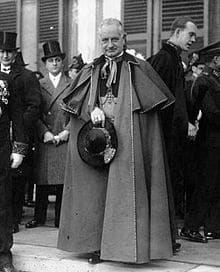
The command board, so to speak, of the Vatican included the pontiff, followed by the secretary of state, Cardinal Maglione, and then his substitutes, Cardinals Montini (the future Paul VI, ed.) and Tardini. Vatican policy was thus carried out primarily by the Pope and then by his collaborator Maglione. It is true that in the Pope’s entourage there was also Monsignor Dell’acqua, delegated to deal with Jewish matters, whose anti-Judaism was well known, but I do not believe that his figure could influence the pontiff’s choices, because in this line of command he was very distant from the top.Every choice made by the Vatican, every word spent, as well as every silence, were the result of an assessment that can be directly attributed to Pope Pacelli and Maglione.
Among the many silences of the pontiff, the one concerning the deportation of the Roman Jews on October 16, 1943, also stands out. Have you given yourself an explanation for this?
I would first discard the possibility that the Nazis might have feared Vatican opposition. I believe, on the contrary, that they acted regardless of reactions from across the Tiber. Moreover, it should also be considered that, although the Roman deportation is essentially the first in Italy, it was actually supposed to be preceded by an intervention in Naples, which, however, could not be carried out because in the meantime the city rose up. Thus the October 16 roundup did not have a symbolic objective, but was part of a plan that would see the deportation of all Jews living in Italy.
There remains the problem of the Pope’s silence.
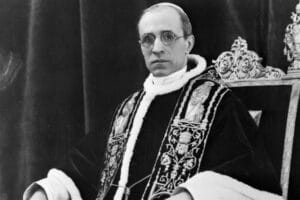
We could say that Pope Pacelli’s silence on October 16 is consistent with that shown throughout 1942, which raises the need to understand what brought it about. In my opinion what is more serious is that the Holy See, already in the fall of ’42, when by then it was aware of the ongoing Shoah, and then in September ’43, when the Nazis entered Rome, did not feel the need, or at least the opportunity, to warn the leadership of the Roman Jews of what was happening, to enable them to organize and try to escape future deportation.
One interpretation of this silence is that the Church feared, in case its opposition became known, Nazi reprisals against its faithful in the occupied territories.
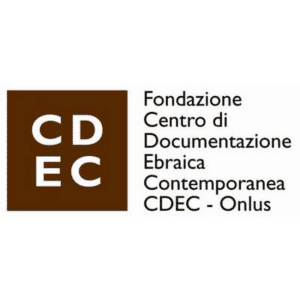
I believe that the reason for this silence was another, namely, anti-Jewishness, or anti-Judaism, which in the Catholic world was still a widespread feeling in those days. We find a clue to such resistance by comparing two very important speeches by Pius XII, the one in December ’42 and the one in June ’43. In the first one the pope mentions people being killed in groups even if they were innocent for reasons of nationality and lineage. In that case we historians believe that the reference to nationality refers to Poles, while the reference to lineage refers to Jews, and yet neither one nor the other is explicitly mentioned. In contrast, in the second speech, Pius XII speaks of “exterminating compulsions” on the grounds of lineage, which again would seem to refer to Jews, and then openly of the tragedy of the Polish people. In six months then Pius XII is convinced, or is convinced, that the Poles deserve to be mentioned, while the same is not true of the Jews.
What is the difference between anti-Jewishness and anti-Semitism?
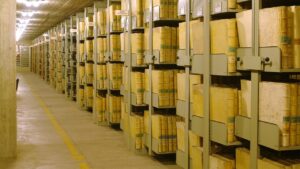
Religious anti-Jewishness is that which sees Jews as an obstacle to the full spread of Christian values; in other words, Catholic religious anti-Jewishness aimed at converting Jews, not killing them. Racist anti-Semitism, on the other hand, is intransigent and developed in the late 1800s and early 1900s, eventually leading to the project of extermination. Anti-Semitism therefore has nothing to do with Christian goals, although, as Adriano Prosperi has long argued, although there is no cause-and-effect relationship certainly anti-Semitism was able to flourish because, as it were, anti-Judaism had prepared the ground for hatred of Jews.
Historians’ research on the papers preserved in the Vatican apostolic archives is just beginning. In your opinion, could more new findings emerge?
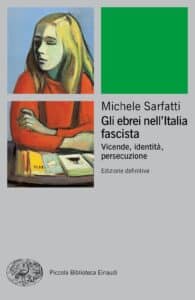
It may be so. So far the documents that have emerged are confirming what historians, based on the documentation known to date, had already written.However, it is always good to have a moment of meeting like this, which allows various scholars to take stock of their research strands and understand what is emerging from research parallel to their own. In general, I would say that archives are always capable of giving surprises, not only the Vatican one, but also the Italian and German ones, where in my opinion there are still many papers that have not yet been properly studied.However, the Gregorian University conference has an extraordinarily positive novelty.
What is it?
For the first time the Catholic world accepts and favors a secular discussion on the work of a pontiff. For the first time people of various faiths, or even of no faith at all, have been questioned as scholars, and they have been confronted on issues that touch on various aspects, not only historical but also theological.
In your opinion, does this conference bring Pius XII’s sanctification closer or further away?
In my opinion it definitely distances it.
In previous days, an interview reported a phrase of yours, whereby you would search the Vatican Archives for “a smoking gun.”
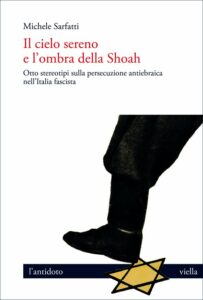
It is obvious that I never uttered this phrase, which is completely out of place, especially when I think of the fumes and guns that are bloodying Israel in these hours. It must have been a fantasy of the interviewer. A historian does not walk around armed with metal detectors, but only with a love of research.
The choice to open the archives was desired by the current pontiff, Francis. In your opinion, is this a way in which the Church shows that it has renounced the sanctification of Pius XII?
This could be a plausible reading. More generally, the importance of this conference is that, in my opinion, it questions a dogma, that of papal infallibility. Indeed, the conference dealt with the pontiff’s choices, with total freedom of expression and confrontation. Also the fact that at the end there was no final document, but that each speaker was able to report his or her personal observations and conclusions, certifies the enormous novelty we witnessed.

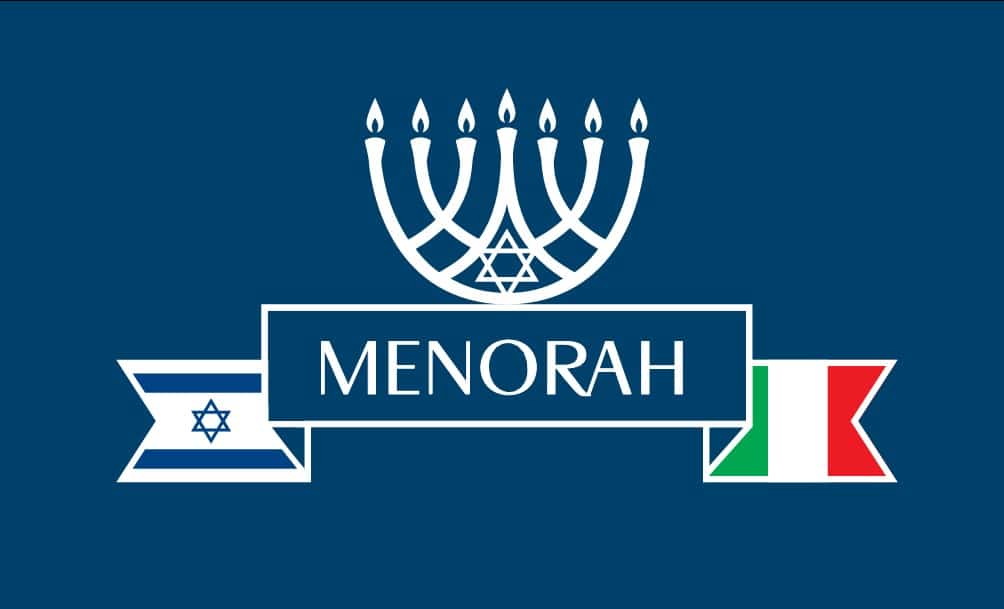
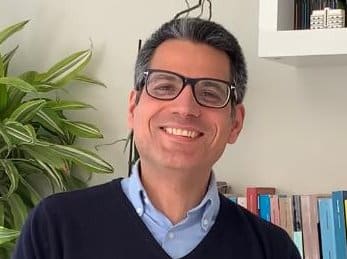
Una risposta
I attended the international conference from October 9 to 11 in Rome. Michele Sarfatti has given an impressive overview of the information the Vatican and the Pope received in 1942 about the extermination of the Jews. Another session discussed the rescue of Jews by the Pope, such as during the raid on October 16, 1943. Jews were indeed taken in by Catholic families and organizations. But when I asked whether clear evidence could be provided that this happened on the orders of Pius XII, the answer was ‘No’. They also talked about the rescue of Jewish children who were hidden with Catholic families, but nothing was said about the fact that after the war some Jewish children were not returned to their original families. I gave some examples of this at the conference (such as the Dutch girls Anneke Beekman and Rebecca Meljado) and I referred to a letter from Pius were baptized were not allowed to be returned to their original families. The letter already appeared in the Corriere della Sera of December 28, 2004.
Yours sincerely,
Dirk Verhofstadt
Retired professor at Ghent University (Belgium) and author of the book ‘Pius XII. und die Vernichtung der Juden’ (ISBN 978-3865690760)